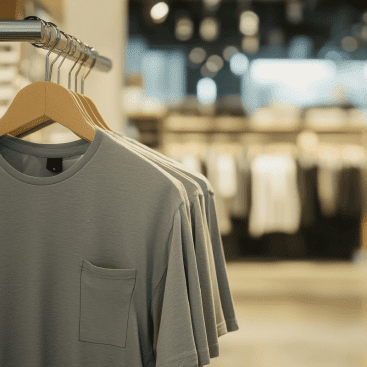The European retail supply chain landscape is undergoing its most significant transformation since the advent of ecommerce. As we move into 2025, here are six critical supply chain trends reshaping European retail in 2025.
#1: Beyond AI hype: 40% use AI in their retail supply chains
While generative AI dominated headlines in 2024, pragmatic retail supply chain leaders are finding concrete value in targeted AI applications that simplify regional considerations like shipping management and supply chain planning.
McKinsey’s research reveals that 40% of organisations already use AI to optimise their retail supply chain operations. The real breakthrough isn’t in chatbots or content generation – it’s in demand forecasting, inventory replenishment, inventory optimization, and predictive maintenance.
European retailers are particularly focused on using AI to manage the complexity of cross-border operations while maintaining efficiency in decision-making. Does your WMS make AI a priority?
92% of leaders believe trustworthy data is needed more than ever. Leaders are eager to harness AI, but what holds them back? What’s needed to make it work?
#2: The real cost of omnichannel: smart solutions for supply chain leaders
The distinction between online and offline retail continues to blur. Today’s European consumers expect seamless experiences across channels, but more importantly, they expect retailers to fulfill these experiences without passing along extra costs to buyers.
Leading retailers are reimagining their supply chain fulfilment networks as fluid, technology-driven ecosystems rather than rigid channel-specific operations. The focus has shifted from simply offering omnichannel options, like click and collect, to optimising their cost and efficiency.
This powerhouse brand transformed their brick-and-mortar stores into high-efficiency fulfilment centres. Our unified solution increased their inventory available to sell by 20% while trimming 3 days from order processing times.
#3: Scope 3 emissions: The hidden 98% threatening your retail supply chain
Sustainability is spinning up big opportunities. Europe’s retail and wholesale value chain emits 1.6 Gt CO2e. Yet, about 98% of it is Scope 3 emissions, according to EuroCommerce’s latest report. This highlights a critical shift: sustainability initiatives are moving from compliance-driven projects to core growth strategies.
European retailers are particularly focused on Scope 3 emissions, recognizing that true environmental impact extends deep into their supply chains. It’s not just about measuring but actually taking action with sustainable practices such as smart cartonisation.
Forward-thinking retailers are discovering that sustainable operations often align with cost efficiency, particularly in areas like packaging optimisation and transportation consolidation.
People don’t like excess packaging (nor do wallets). Discover the rapid cost benefits of cartonisation and fulfilment all in one supply chain system.
#4: Supply chain intelligence elevates customer-centricity
The most successful European retailers use modern warehouse management technology to redefine customer-centricity in their supply chain operations. This goes beyond personalised marketing to include dynamic delivery options, real-time inventory visibility, and flexible fulfilment models.
The key is using supply chain intelligence not just to sell more effectively but to operate more efficiently. Look for retail fulfillment software that weaves intelligence into their platform natively.
A single decision can reroute a company’s entire destiny and value. Supply Chain Intelligence (SCI) and AI-driven actionable insights put you in the driver’s seat of customer service.
#5: International expansion gets strategic
Cross-border commerce within Europe continues to grow but with a new emphasis on operational resilience. The retail supply chain trend is to build flexible fulfillment networks that can adapt to regional variations in demand while maintaining consistent service levels.
The focus has shifted from rapid expansion to sustainable growth built on robust software foundations that lead to more intelligent decision-making around tax burdens, consolidated shipments, and warehouse space optimisation.
#6: Retail supply chain automation: The great enabler
While warehouse robotics grab headlines, the real automation revolution is happening in systems and processes. European retailers are investing heavily in retail supply chain automation software that can orchestrate complex operations across multiple countries and multiple channels, including Direct-to-Consumer (DTC).
Modern Materials Handling reports that 73% of retailers increased their automation investments in 2024, focusing on systems that can scale flexibly with demand. When asked why organisations are investing in warehouse automation over the next two years, the data found:
- The majority (66%) of respondents want to improve warehouse capacity utilisation (up from 60% last year)
- 58% are looking to improve picking efficiency
- 57% want to improve utilisation and reduce turnover
- 52% want to improve throughput
- 52% want improved order accuracy
- 42% are hoping to improve order cycle time
The thing about purpose-built automation solutions is that they are expensive. It’s not always necessary to implement a big, expensive automation project if you have the proper WMS foundation that accommodates it through plug-and-play integrations and strategic partnerships.
How could retail supply chain automation benefit your brand? Learn what to assess, the MHE options, and where to start.
How these retail trends impact you
The most successful businesses will view these European retail trends as interconnected opportunities, rather than separate initiatives. The common thread is a retail supply chain platform that can adapt quickly to change while maintaining operational excellence.
As a retail supply chain leader, you probably hear the message clearly: the time for incremental improvements has passed. Your future success requires building retail fulfilment operations that are not just efficient but inherently adaptable.
The technology exists – the question is whether organisations will move quickly enough to capture its value.
